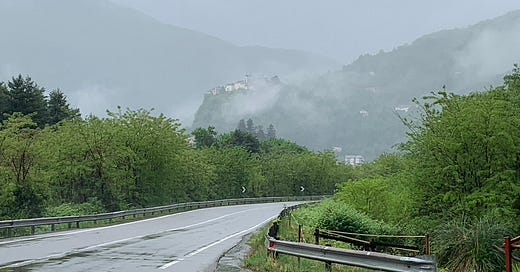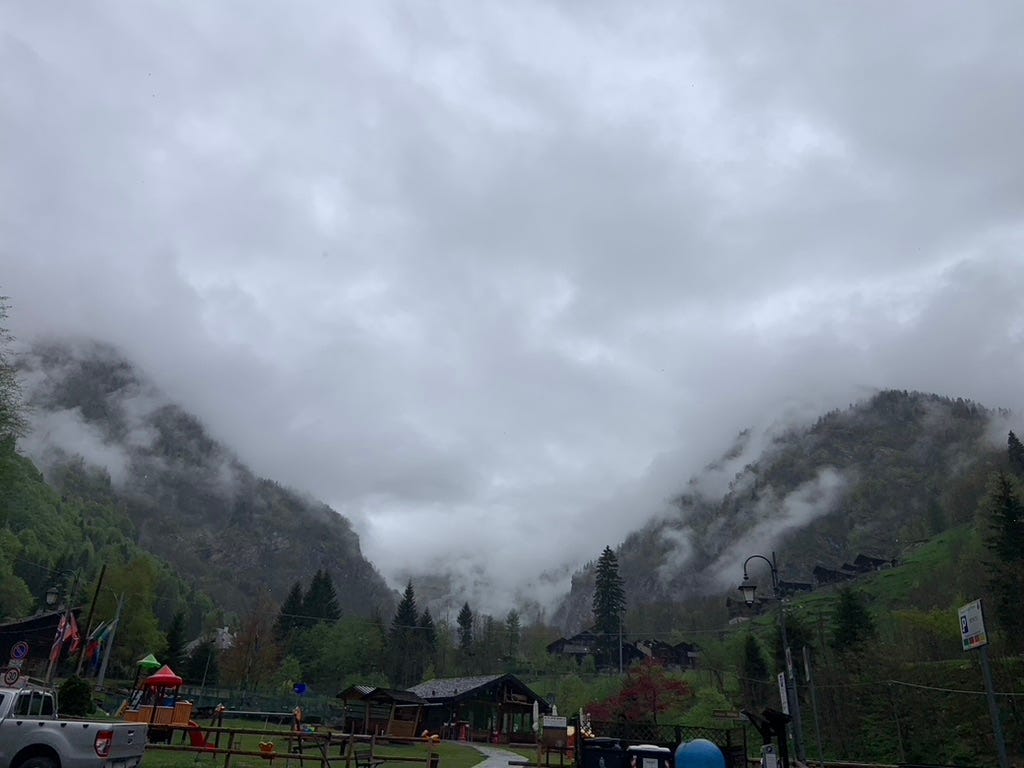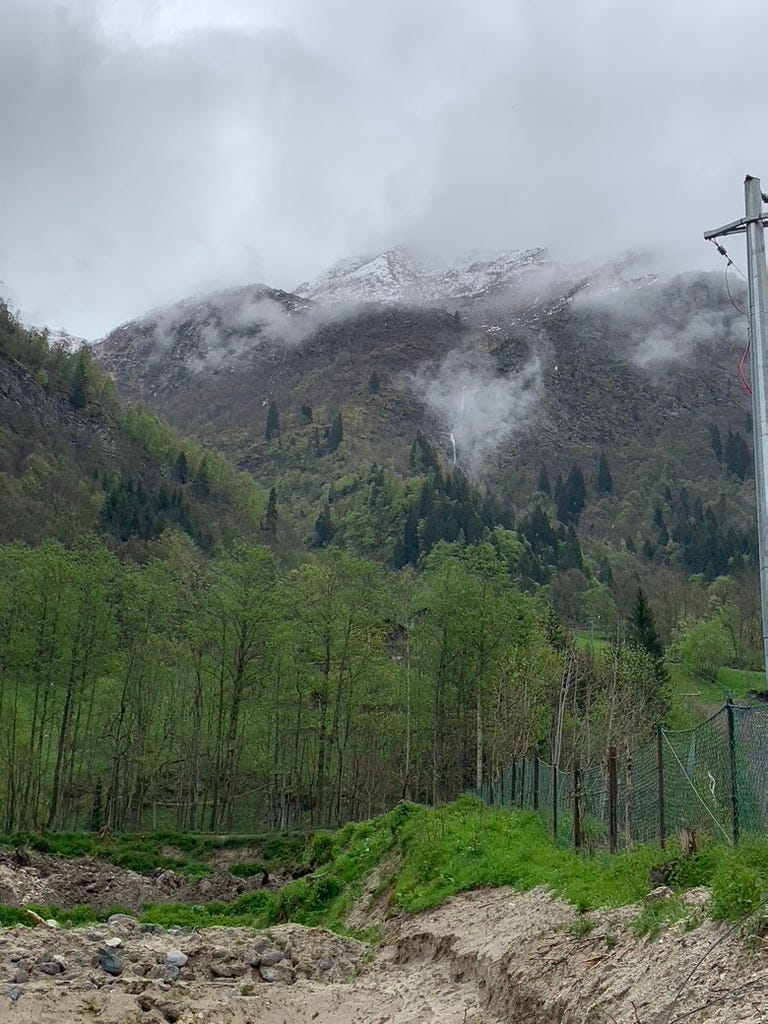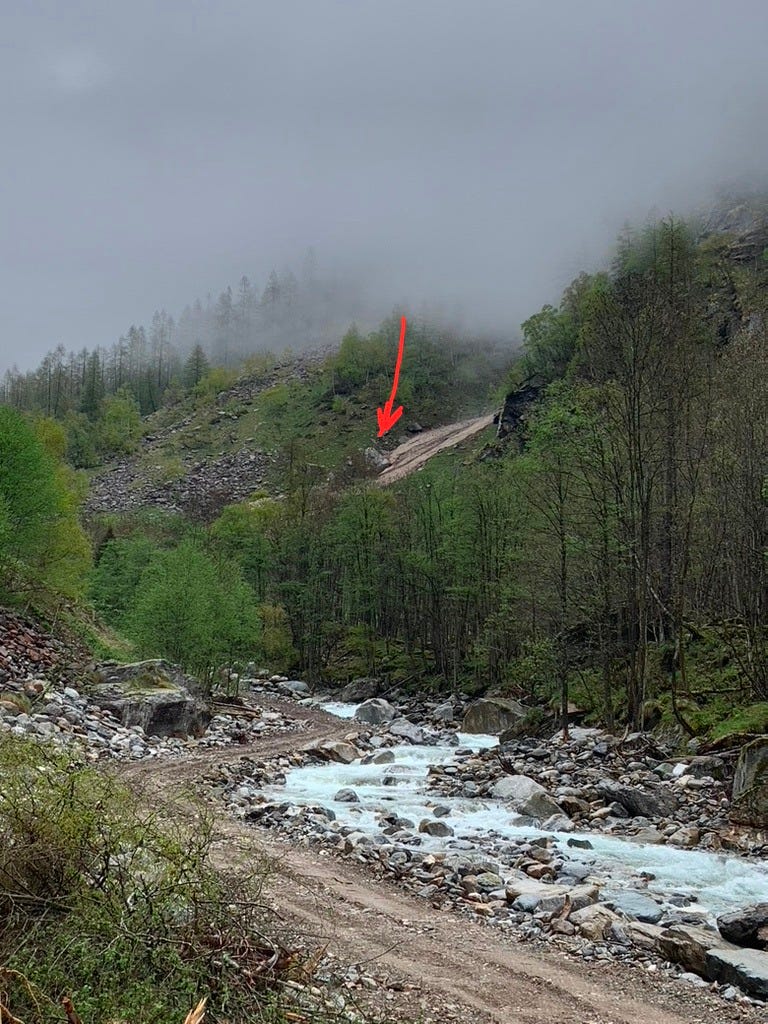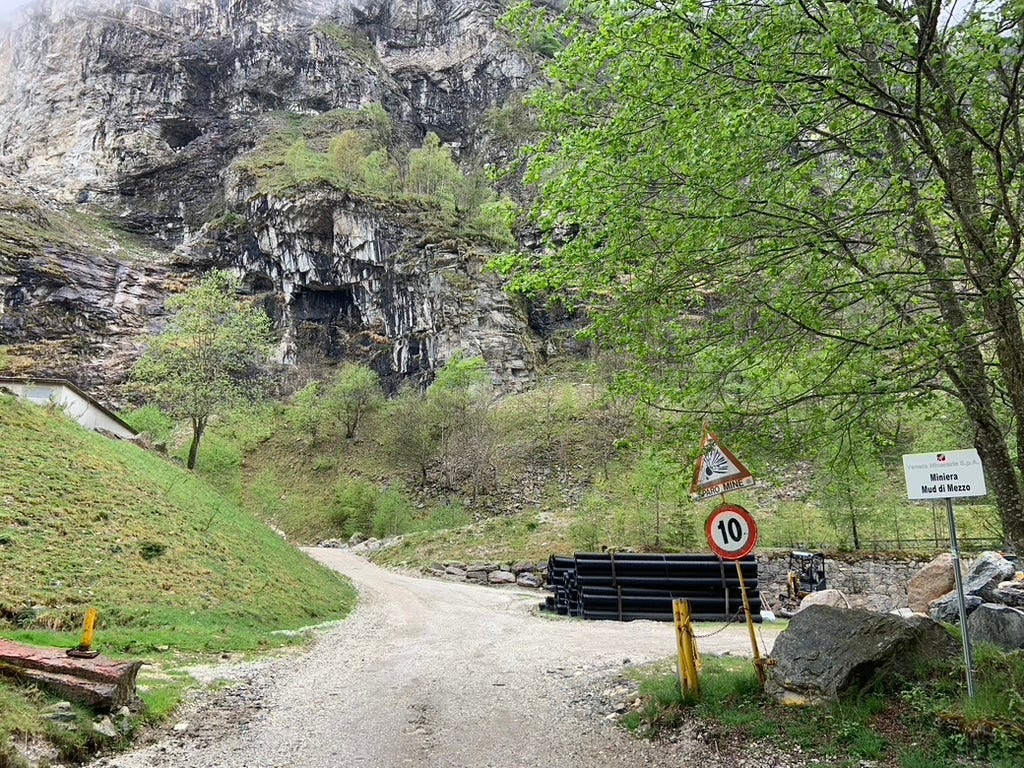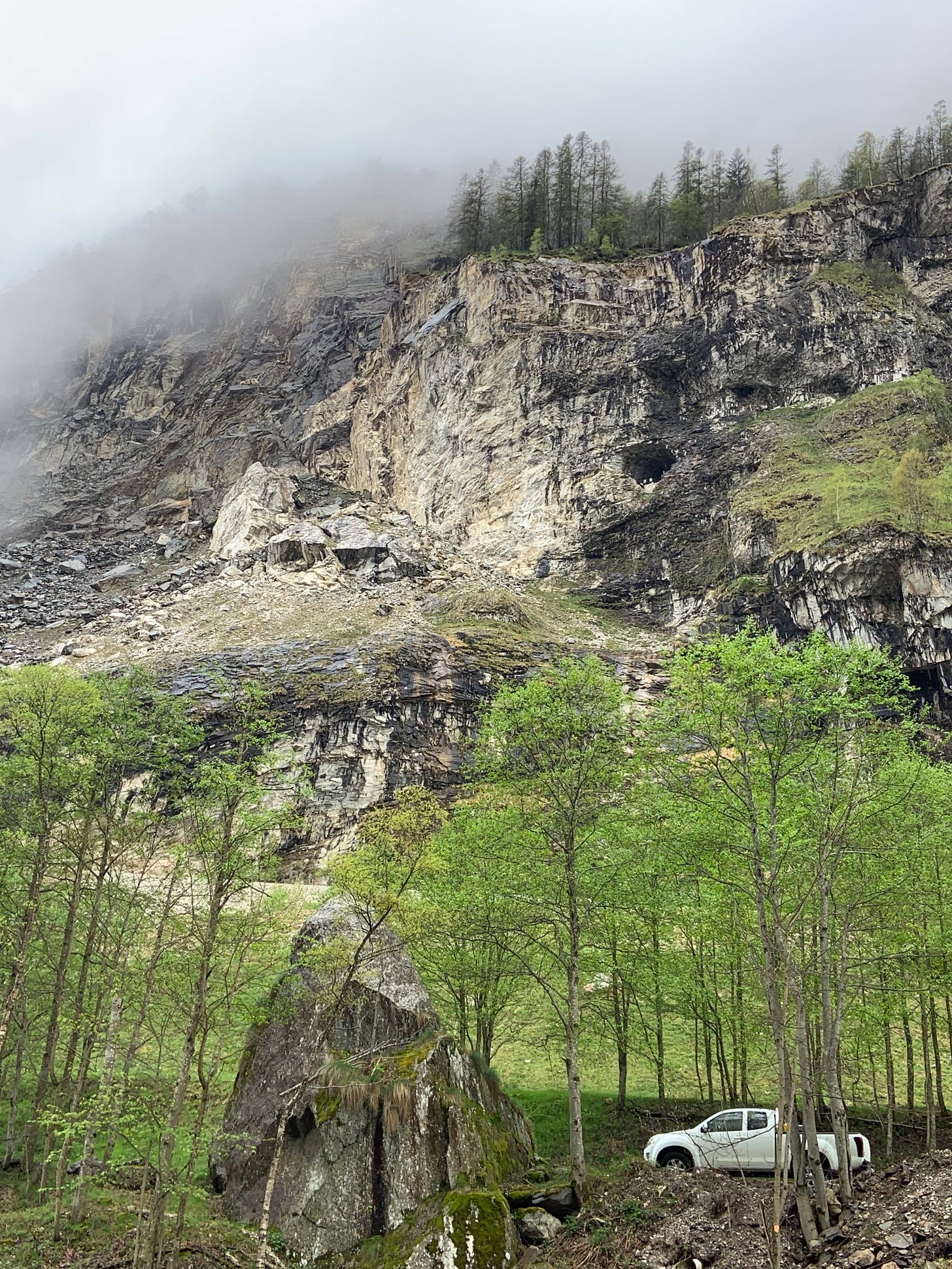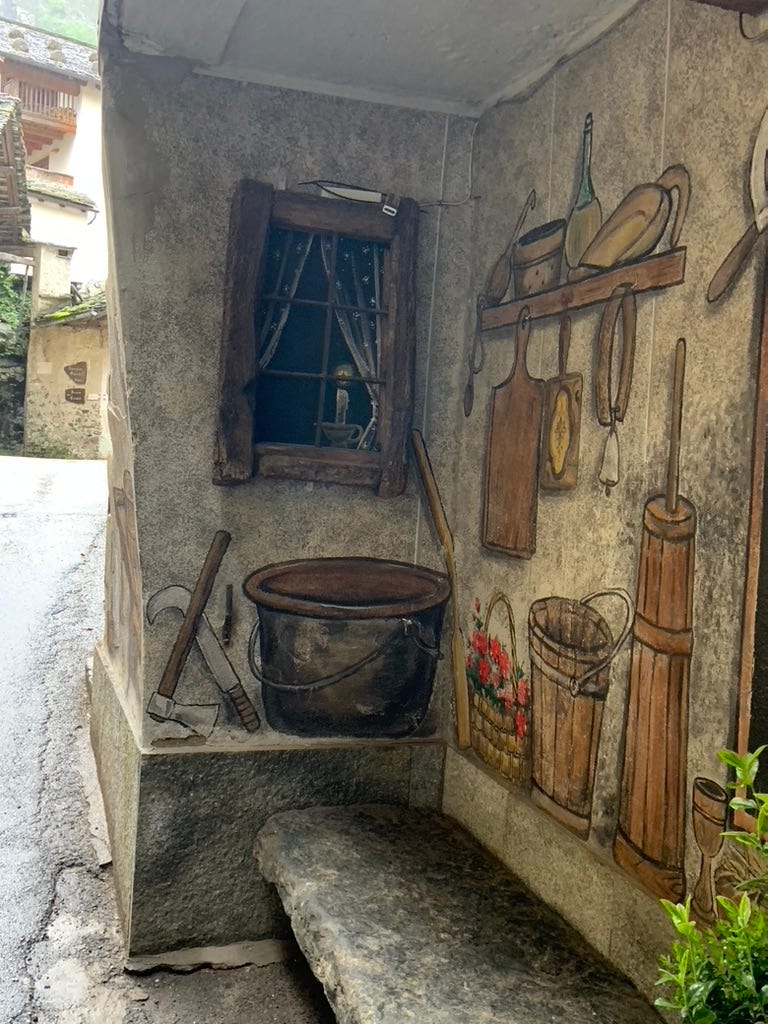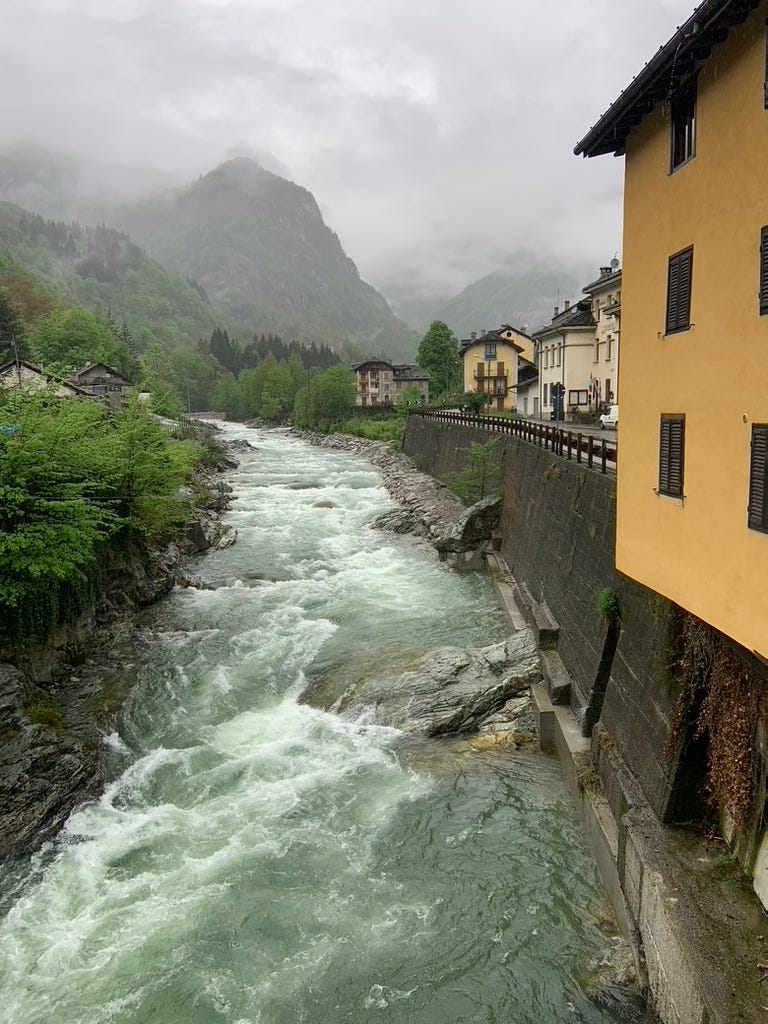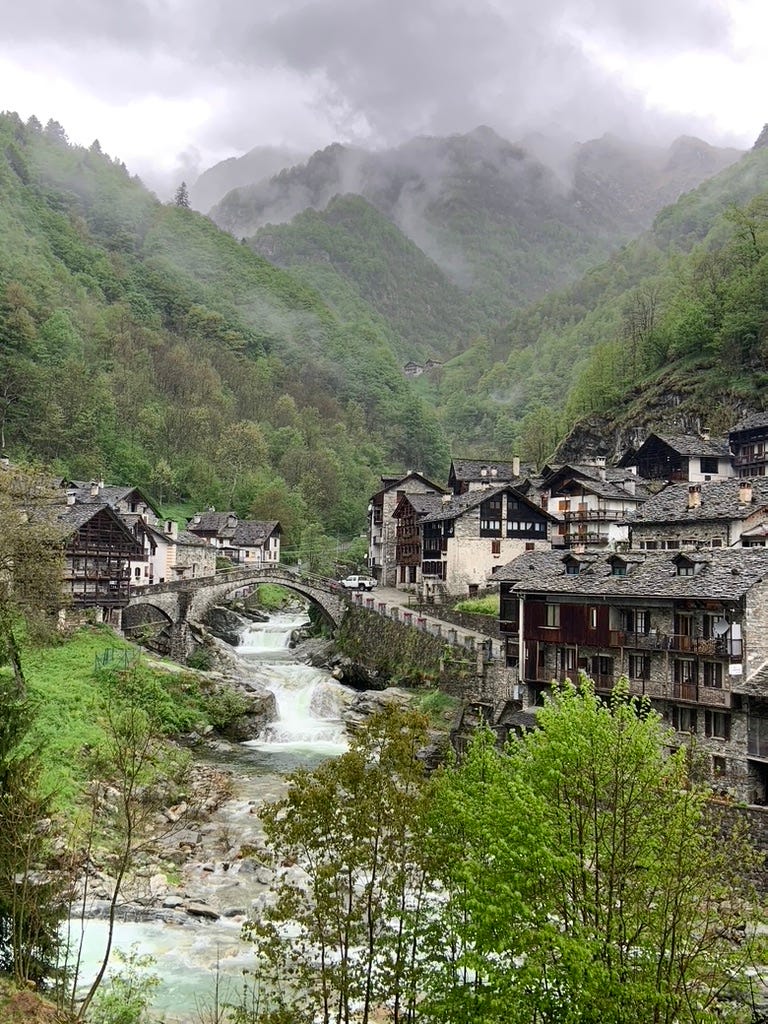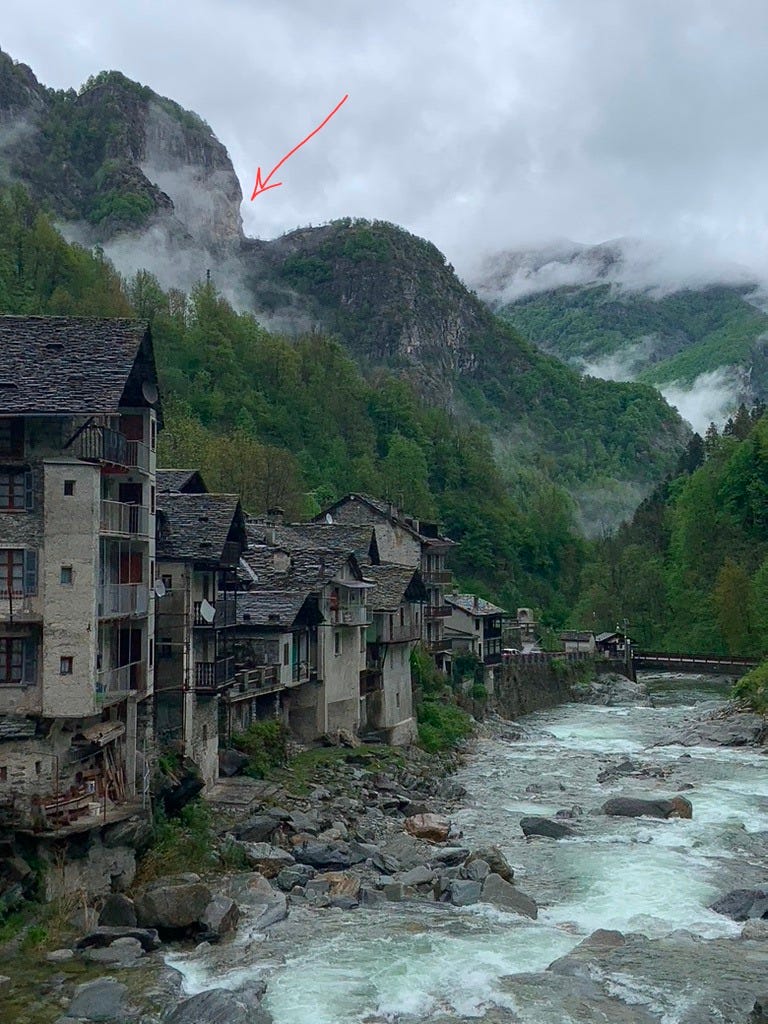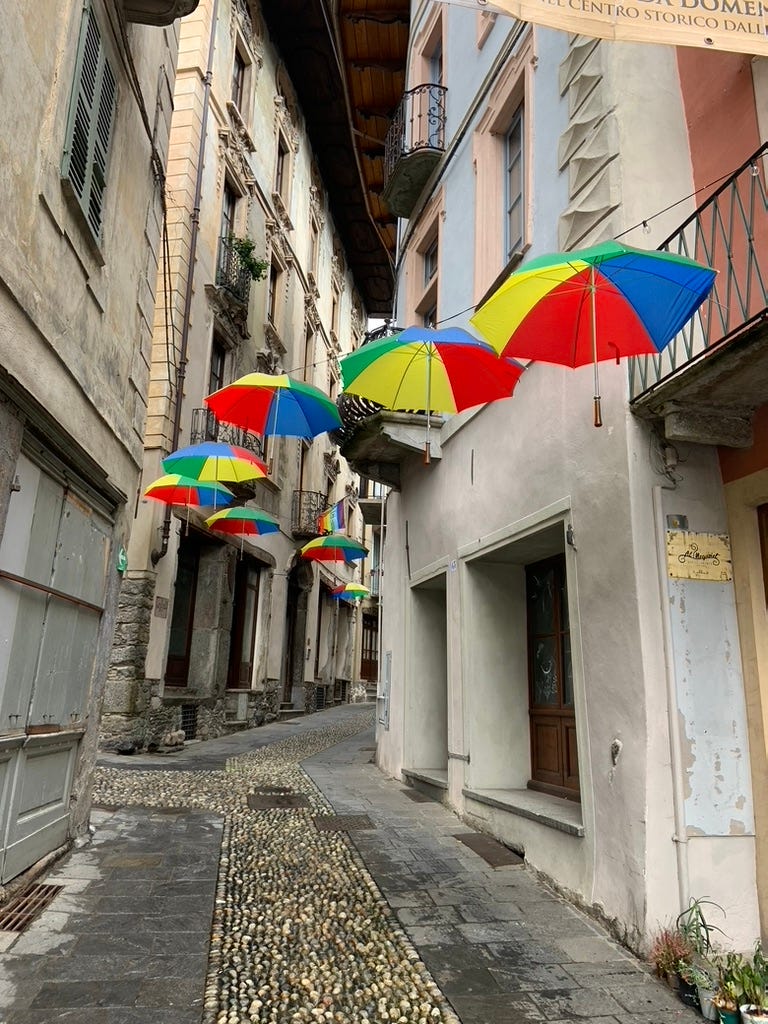In The Rain In The Alps
What could be less pleasant than spending your holiday in Italy in the pouring rain? But... Alps are always beautiful, and rain donates them something more special in confront to everyday sunny mood.
After an autumn and winter without rain and snow, the inhabitants of the regions near the Alps have begun to worry that there will be another prolonged drought. We will be left with little water and few fruits and vegetables. A prolonged dry spell has just ended. It lasted years. And of course, people were worried. But then, later, in late spring, here it is! The mountains are covered in snow, and it rains, rains, rains.
During this period, my friends decided to spend a few days of their holiday with me. If you look at my photos, you can imagine how happy they were. But we decided to go to this stunning valley anyway, not only on sunny days. I love it and have just written about it here more times. But you have never seen it in such rainy conditions.
It is very interesting that you can immediately see the numerous waterfalls due to the clouds spraying them. Sometimes, you see the clouds of spray, but you don't see the falls themselves.
Many roads are closed due to landslides. In some places, they are quite small, but in this case, the landslide was terrifying—and not just because it was so big. Look at that huge boulder (arrow) the landslide took with it! I imagine that rock will go down with the first significant rain. People work near the river. They strengthen the margins and remove some boulders from the river bed. I have already told you that these boulders carried by the rivers destroy and take away entire bridges - old and new - every year.
The region around Alagna is known for its historic mining activity, primarily involving mineral deposits like quartz and garnet. These deposits have played a significant role in the area's local economy and history, attracting prospectors and mineral enthusiasts. Although many of the mines are now abandoned, their tunnels and shafts remain a testament to the area's mining heritage. Visitors interested in geology often explore the old mines to study the mineral formations and learn about the mining techniques used in the past.
The Miniera Mud di Mezzo (you see its entrance and “windows” in the following photos) was known for extracting asbestos, particularly chrysotile asbestos, which was used for insulation and fireproofing. The mine operated in the past, but asbestos extraction has since been discontinued due to health risks associated with exposure.
Many houses in the valley have paintings on the walls. I particularly like this window: it seems that everything is true.
The river is scary
Rassa is one of the most picturesque villages, even in summer. But look at it now…
The face of the monk Dolcino covered with the clouds, is scary, too
Some happy umbrellas and a delicious pizza, maybe the best in the Biella area, change our mood for the better

